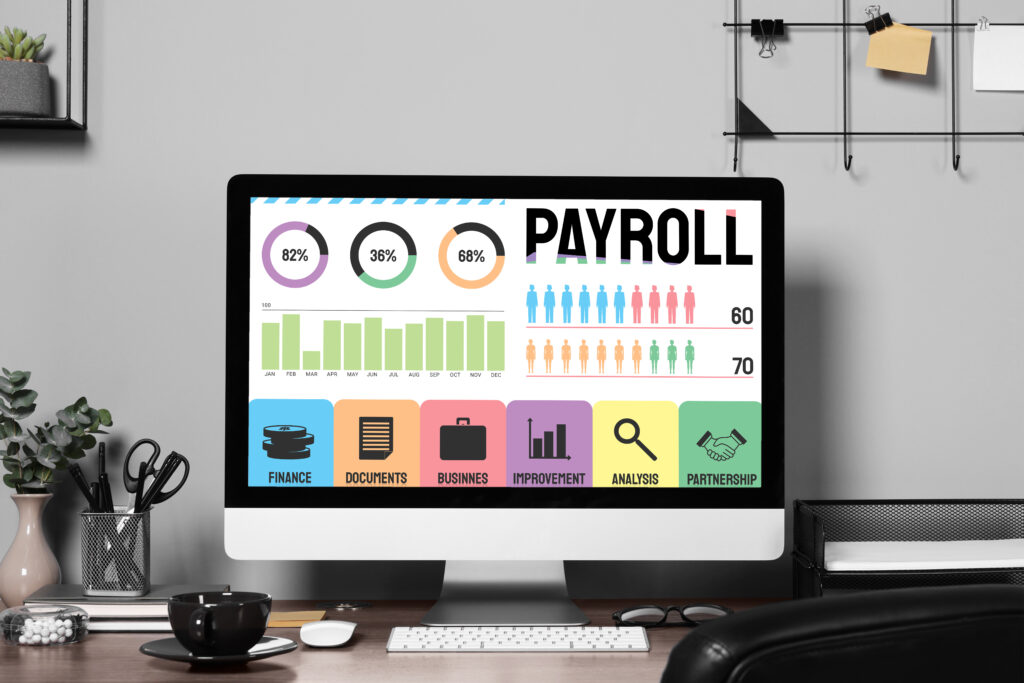Tax Codes in the UK refer to a series of numbers and alphabets used by HMRC to determine how much income tax needs to be deducted from your earnings.
These codes are used to reflect on an individual’s tax-free allowance and any other additional income that requires taxing.
In this guide, we will explain how these tax codes work in payroll, which are the most common ones, and how to fix any errors that may occur.

What Is a Tax Code in Payroll?
In the UK PAYE (Pay As You Go) system, Tax Codes are crucial as they determine how much tax an employer should deduct from an employee’s earnings before they are paid.
These alphanumeric codes are issued by HMRC to tell employers three main things:
- How much tax-free income an employee is entitled to get
- Which tax rate(s) should apply to the employee’s earnings
- Adjustments for any additional taxable income
Both employers and employees should understand and comprehend tax codes to ensure correct deductions. Mistakes in these deductions can lead to overpayment, underpayment and PAYE errors, which may result in unexpected tax bills or refunds.
How do tax codes work in the UK?
When an employee starts working for a company, they will be able to get their initial tax code from their P45 form. Once the person’s information has been sent to and processed by HMRC, the tax code may be updated.
How UK Tax Codes Are Structured
Tax codes are a combination of letters and numbers. For example, the tax code 1257L is the most commonly used in the UK for employees.
The numbers represent the employee’s tax-free personal allowance, which means that it tells the employer how much an employee can earn before paying tax. The number 1257 meaning £12,570 is the tax-free personal income for the tax year 2024/25.
The letters in the tax code can be suffixes or prefixes, and they indicate how an employee’s circumstances can affect their annual personal allowance. For example,
- BR – All income taxed at basic rate (20%)
- K – Indicates extra income to be taxed
- M/N – Marriage Allowance transfer (received/given)
Additionally, letters in these codes lets HMRC communicate to employers regarding any broad changes to the tax codes.
For example, HMRC may issue guidance to all employers at the start of a new tax year to update all the ‘L’ codes to reflect the updated personal allowance amount.
List of Tax Codes and What They Mean
Here is a breakdown of the most common UK tax codes and they may indicate for employees and payroll:
Standard Tax Codes
These codes cover typical employment situations with standard tax-free allowances:
| Code | How and When They Are Used |
|---|---|
| 1257L | Standard Personal Allowance (£12,570 tax-free) – Most common code for 2024/25 |
| 1257L W1/M1 |
Emergency tax (non-cumulative) – Applied when starting new job without P45 |
| 0T | No tax-free allowance (all income taxed) – Used when allowances are exhausted or revoked |
Rate-Based Tax Codes
These codes apply when all income should be taxed at a specific rate:
| Code | How and When They Are Used |
|---|---|
| BR | All income taxed at Basic Rate (20%) – Typically for second jobs or pensions |
| D0 | All income taxed at Higher Rate (40%) – For high-earning second jobs/pensions |
| D1 | All income taxed at Additional Rate (45%) – For very high-income secondary earnings |
Special Circumstance Codes
These codes handle unique situations like benefits, regional variations, or marriage allowance:
| Code | How and When They Are Used |
|---|---|
| K codes (e.g., K500) | Extra taxable income (e.g., benefits) – Used for company cars/medical insurance |
| NT | No tax deducted – For certain non-taxable incomes |
| S prefix (e.g., S1257L) | Scottish tax rates apply – For Scottish taxpayers |
| C prefix (e.g., C1257L) | Welsh tax rates apply – For Welsh taxpayers |
| M suffix (e.g., 1260M) | Received Marriage Allowance transfer – When 10% of partner’s allowance is transferred |
| N suffix (e.g., 1260N) | Transferred Marriage Allowance – When 10% of allowance is given to partner |
Other Tax Codes
These cover less common or temporary tax code situations:
| Code | How and When They Are Used |
|---|---|
| T | Temporary code requiring review – For complex tax situations |
| Tax Code with ‘X’ | Emergency code (outdated) – Rarely used, now replaced by W1/M1 |
Key Notes:
- HMRC updates all tax codes when circumstances change such as new job, benefits, or pension income
- Employees should check their tax code on payslips, P45, or HMRC’s online portal.
- Employers must apply the correct code to avoid any under/overpayment issues.
What Are Emergency Tax Codes?
Emergency tax codes refer to temporary codes that are used when HMRC doesn’t have enough information about an employee’s income.
Some emergency codes may look like ‘125L W1’, ‘1257 M1’ or ‘OT’. These ones commonly appear when:
- You have started a new job without providing P45 to your new employer
- You are a first time employee after being self-employed
- Company payroll doesn’t have up-to-date tax details
How to Identify & Fix Them
HMRC may issue emergency codes at the start but this can be easily fixed by taking these few steps:
- Employees should check their pay-slips for “W1”, “M1”, or “0T” codes
- They should regularly update HMRC via their online tax account
- Employers must submit correct details of their employees via RTI payroll
- Normal tax code resumes once HMRC processes the information
Emergency codes often lead to over-taxation, so correcting them quickly ensures employees don’t overpay.
When and Why Tax Codes Change
Tax codes are constantly changing. They are adjusted to your financial situation in terms of your job.
Here are some common triggers that could affect your tax code changes:
- Income changes: Pay rises, bonuses or starting a new job
- Benefits-in-kind: Receiving a company car, health insurance or accommodation
- Multiple incomes: Starting a second job or pension payments
- Allowance adjustments: Marriage Allowance claims or losing Personal Allowance (high earners over £100k)
- Job changes: Switching employment without a P45
In case of any change to the financial circumstances of the employee, HMRC will automatically update the tax codes via P2 Coding Notices. In such cases employees should check their Payslips, HMRC online accounts and their.
Pro tip: A sudden code change could mean unpaid tax from previous years. Always verify with HMRC if unsure.
What to Do If a Tax Code Is Wrong
An incorrect tax code can seem like a simple mistake but when it leads to underpayment and overpayment of taxes, that’s when you are in trouble.
But these issues can be resolved easily if you know the right steps to take.
For Employers
In case of an incorrect tax code, the employer should immediately update the employee’s tax code in their payroll system and submit the correction through the next Real Time Information (RTI) submission.
If unsure, the employer can use HMRC’s PAYE tools to verify the codes or they can contact HMRC directly for clarification.
For Employees
As an employee, you should firstly check your tax codes on your payslip or P45 against your Personal Tax Account o n the HMRC official website. If this code is wrong and does not match, immediately contact HMRC online or by phone to request a review.
In case of this, you may be required to provide details of your income and employment circumstances to HMRC.
Final Insights on UK Tax Codes
Understanding and applying the right tax codes is fundamental to have smooth payroll operations. Accurate codes ensure employees pay the correct tax while also protecting businesses from compliance issues.
The consequences of errors can be significant for both employers and employees:
- Employees may face unexpected tax bills or refund delays
- Businesses risk penalties for incorrect PAYE reporting
- Payroll disputes can damage employer-employee trust
Don’t leave tax codes to chance. Contact us today for reliable, accurate payroll processing that gives you peace of mind month after month. We’ll ensure your tax codes are always correct, compliant and up-to-date.



Leave a Reply